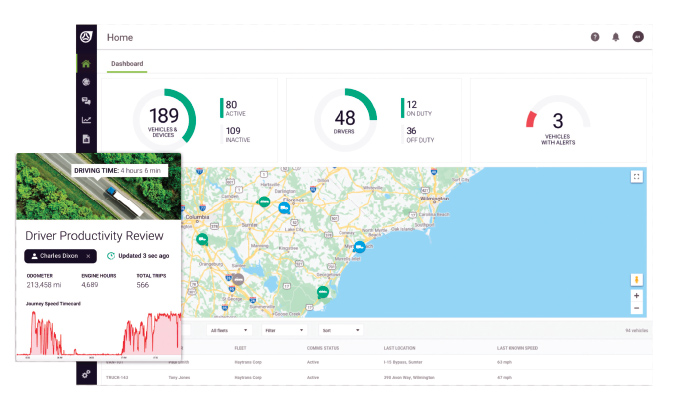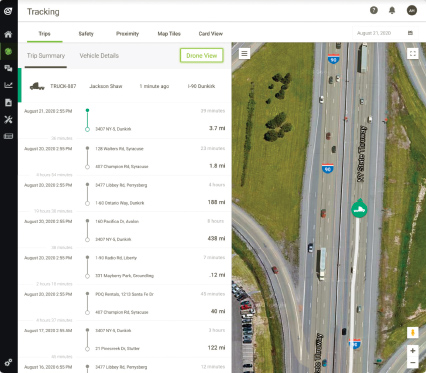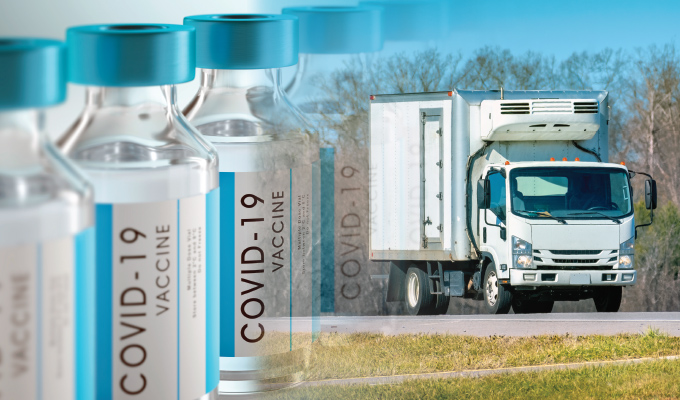by Carlos Caponera
One thing authorities are learning with the distribution of the COVID-19 vaccine is that data matters. Since the first vials of this medical breakthrough left their factories on highly specialized refrigerated trucks in December last year, there have been numerous reports of seemingly avoidable mistakes.
From a miscommunication between logistics officials and the US Food and Drug Administration that left 14 states with vaccine shortfalls to reports of vaccine shipments going to waste or spoiling because of poor timing or confusion over protocols, there is a general state of confusion clouding this initial phase of the distribution effort. With the CDC reporting more than 16 million cases and 300,000 deaths in the US throughout 2020, the stakes could not be higher, and these mistakes could be avoided.
Part of the solution to this national mobilization is telematics—the data and connectivity of the supply chain as vaccines are transported from the factory to the end recipient. Unlike 2009’s H1N1 vaccines, which had to be maintained at a temperature range of 35 to 46 degrees F, today’s COVID-19 vaccine from Pfizer/BioNTech must be kept at a frigid -94 degrees F or it will lose its effectiveness. Each package of 1,000 doses is packed in dry ice and equipped with thermometers that relay critical information to organizers and the team awaiting the supply at an administration site. These individuals are tasked with monitoring the health of the vaccine in transit and ensuring the vaccine maintains stable temperatures during the journey from point A to point B.

COLD CHAIN BACKBONE
It’s an example of telematics at its most crucial purpose, and it gets even more complicated. The first COVID-19 vaccines must be administered twice—21 days apart—for each participant to maximize their effectiveness, making timely deliveries all the more critical. More than a billion units must be delivered at precise times and temperatures. Such volume and precision can only be managed with the highest levels of secure information sharing, backed by real-time data and telematics.
Supply chains—in this case, it’s known as a “cold chain”—have come a long way since the Spanish flu of a century ago or even more recent medical deployments of rotavirus, pneumococcal, and meningococcal vaccines. Now telematics is the backbone of smart fleet deployments with cameras and sensors in and out of each vehicle communicating with a command center as well as each other. Satellites call in directions. With full transparency, shipments are weighed, and temperatures of the cargo are tabulated—all while important factors such as speed, harsh turning, and braking intensity are measured. These harsh driving behaviors can result in damaged cargo, and this cargo is far too important to allow for these avoidable errors. Everything that can be known is known and relayed to the powers that be.
Thanks to artificial intelligence (AI), the data collected with each vaccine shipment can become more accurate and predictable with each additional delivery. Due to the nature of the distributions—which are essentially going out to every major market in the nation simultaneously with additional trips for each group of recipients—the data can drive better decisions with each subsequent delivery. Obstacles encountered on each route, such as a dangerous interchange or traffic hot spot, are logged and applied to new calculations, making the journey more efficient each time.

PLANNING WITH DATA
With an advanced telematics system, distribution and logistics managers will know when to substitute different trucks, adjust the route, or alert the receiving team at the hospital or vaccination site about a schedule change. It’s the secret ingredient to keeping the distribution running as smoothly as possible.
Additionally, telematics systems like fleet and asset management software can inform fleet managers, drivers, and the medical team awaiting the vaccine shipment where the vehicle is on its route and compares its progress to other relevant data sets such as traffic patterns and nearby hazards. Such data can inform those on the receiving end of the cold chain and empower them to plan accordingly with regard to staffing, storage availability, and crowd management.
The worst-case scenario with sensitive deliveries like this is when all the effort and data work together through the entire cold chain just to have the shipments spoil at the very end. Unfortunately, so far it’s been a common outcome, but data informed by advanced telematics will go a long way toward avoiding these tragic pitfalls while delivering COVID-19 vaccines to save lives.
ABOUT THE AUTHOR
Carlos Caponera joined Teletrac Navman as global head of marketing in 2017. He has achieved success in companies such as Experian—leading international expansion of its digital subscription services—as well as internet startups such as Optima Tax Relief, Overnightprints.com, and Local.com. With more than 17 years’ experience in marketing, Carlos has held leadership roles in demand generation, product, analytics, brand, and strategy for global marketing teams. Find out more, visit www.teletracnavman.com.




